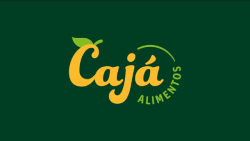The second style of knowledge-created approach relies on DNA construction also the series (17, 18)
Satisfy and you will Keep in touch with Enjoyable American singles Close by toward 100hookup
setembro 23, 2022What’s the difference in love which is genuine and wants that’s not?
setembro 23, 2022Ergo, these methods never capture all facets of your fine epigenetic outcomes one control biology
(17) whom examined new geometry from stacks off one or two neighboring legs-pair methods just like the noticed in crystal formations. The version of your geometrical details governing DNA twisting will bring a keen guess of twisting energies regarding the specific ft-few methods. Such as for instance, the fresh new method followed by Xu and you will Olson (18) depends on studies-dependent dinucleotide step energies to help you determine brand new flexing energy out of a beneficial succession threaded on a great nucleosomal DNA layout. Of the most insightful the means to access overlapping architectural fragments, Lavery and you will coworkers produced an almost all-atom quality physics-built way for the new high-throughput modeling out of DNA–protein-binding web sites (19, 20). This clever strategy divides the newest software with the a set of overlapping DNA fragments each from the protein fragments in which it communicates. This allows highest connects become checked-out inside reasonable desktop go out. Application into the nucleosome (20) yielded brand new nucleosome-joining needs when it comes down to DNA sequenceparison of performance with tests getting eukaryotic transcription initiate sites try extremely encouraging (20).
Even though sequence depending strategies (11 ? ? ? –15) is actually predictive and value-active, they cannot in person account for people structural advice, which is specifically associated if one is to try to differentiate the same series themes having line of epigenetic scratches. Also, newest framework-dependent methods (17 ? ? –20) possibly rely on statistical research away from prior studies (17, 18) and you can lack the suggestions needed seriously to get epigenetic changes (age.grams., methylation) or fool around with fragments (19, 20) therefore, the real method is not modeled total.
This process is actually initiated by the groundbreaking functions off Olson et al
To break which dependence on recognized fresh research and acceptably get epigenetic scratching under consideration, i use a process that designs nucleosomal DNA due to the fact an all-atom construction. It requires threading a specific series with the a layout design accompanied by the conformational optimization (21, 22) directed by the a pretty much all-atom opportunity setting (23) having implicit solvent Oklahoma City OK escort service model (24). As such, our predict nucleosome occupancies and you can dyad positions are not biased by assumptions outside the conventional approximations of the most of the-atom empirical force sphere (23). While we fool around with an enthusiastic empirical molecular aspects force industry, our method may be used having people push community that may getting calculated effectively and will become methodically improved in concert with our growing physicochemical knowledge of first nuclear relations. Our method is demonstrated in more detail for the Fig. step one and you may Fig. S1.
Threading any DNA sequence onto a nucleosome-shaped DNA template. (A) Surface representation of superhelical DNA (backbone in cyan, A in green, C in blue, G in yellow, and T in red) wrapping around the histone core in the nucleosome structure (PDB ID code 1kx5). (B) The representative local sequence S198,305, whose first nucleotide is at position n = 198,305 along the genomic sequence (denoted by Q) of yeast chromosome 14, is shown. To demonstrate the threading protocol (C) a tetranucleotide (4-nt), GTTC is chosen from the oligonucleotide, TCCAGTTCTT located at position 51 of the 147-nt local sequence S198,305. GTTC in a 4-bp structure is shown in dashed box. (C) The two-step design protocol for the chosen tetranucleotide. First, the native sequence of the DNA nucleosome template is converted to a sequence of planes each defined by a root atom (light blue) and three pseudoatoms (orange). Second, the base planes are replaced with bases from the tetranucleotide sequence. As a result of the design protocol, the native (human) DNA is removed and the yeast sequence is added. (D) DNA accommodating the local sequences Sn. The DNA surface is omitted for the region 51–60 that includes the 10-nt oligonucleotide discussed in B. (E) Showing the all atom energy terms used in the calculation. (F) The nucleosome energy E(i) or related occupancy O(i), plotted as a function of the local sequence position (i). The red dot marks the energy at local sequence Sn. The size of a nucleosome is indicated by the brown arrowheads.
